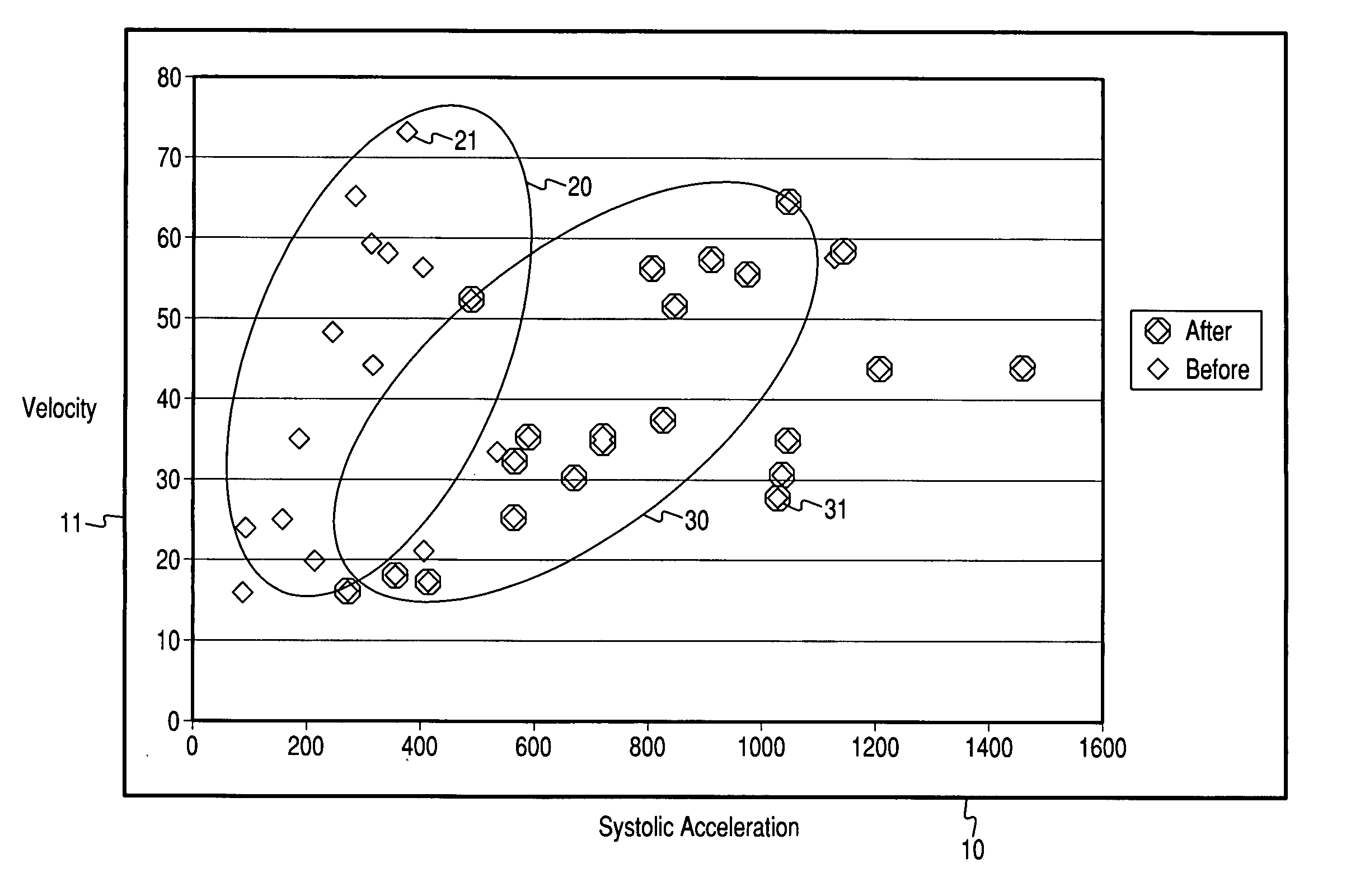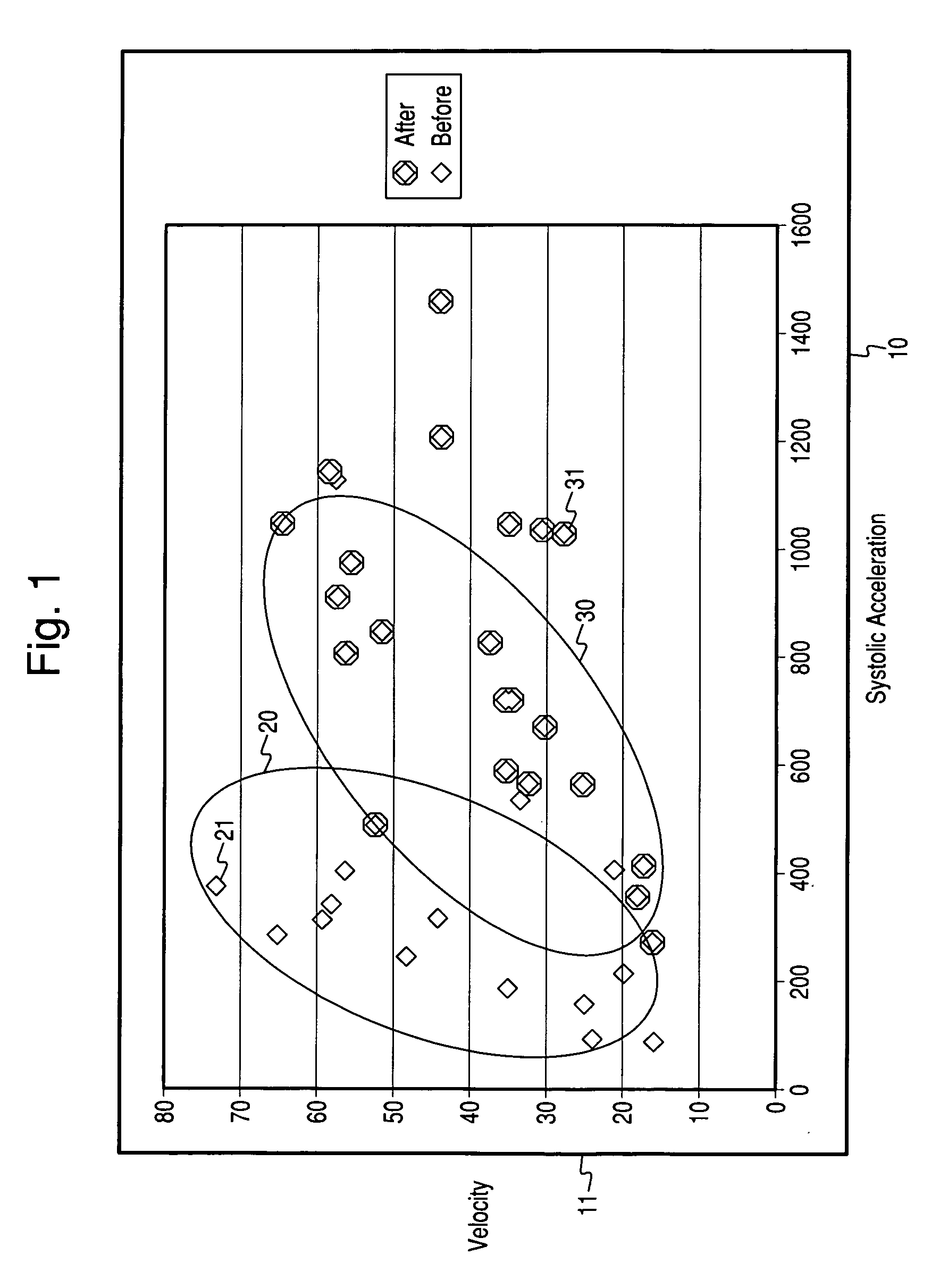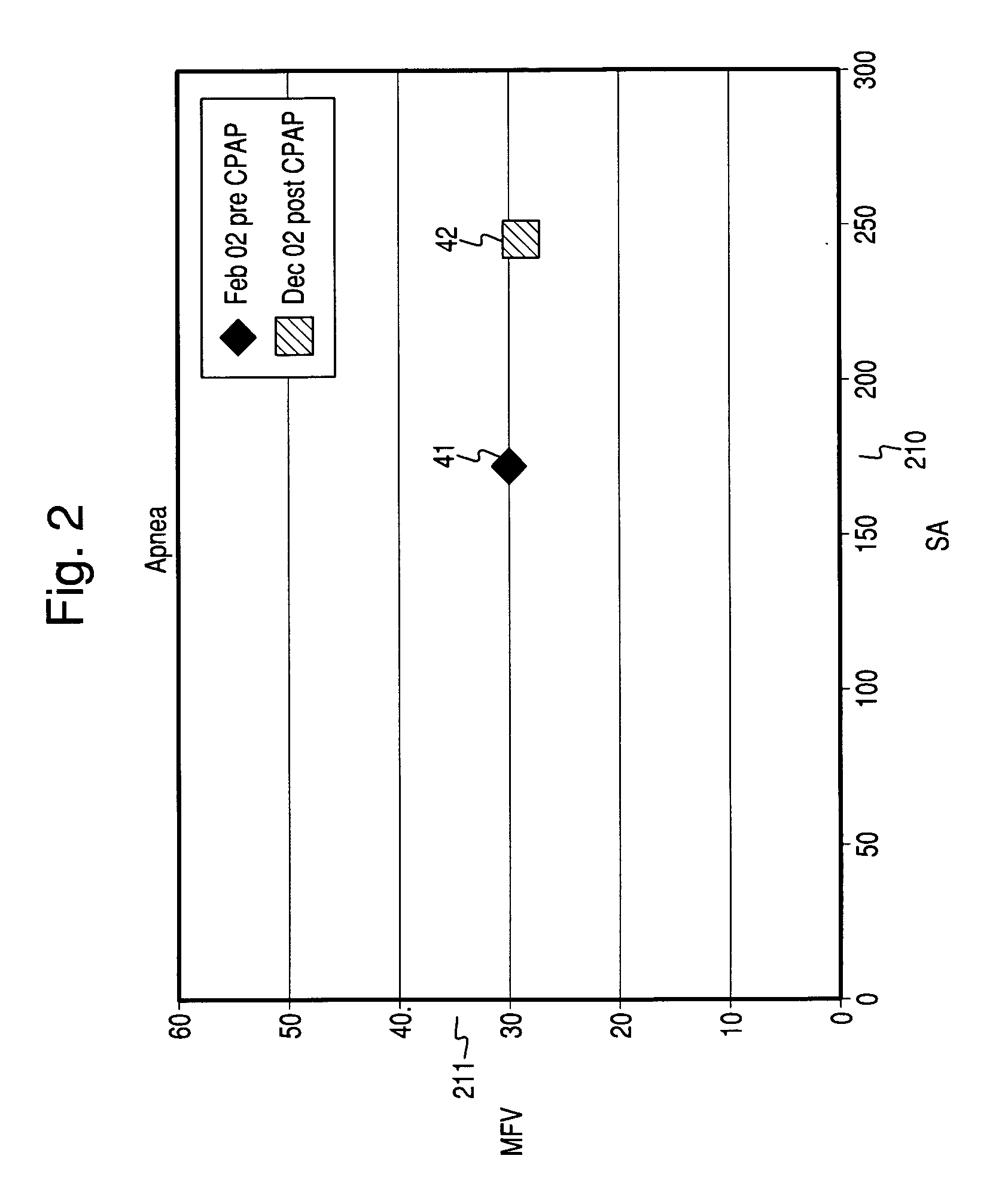Detecting, assessing, and diagnosing sleep apnea
a technology for sleep apnea and sleep assessment, applied in the field of system and method for assessing, diagnosing, and prediagnosing sleep apnea and assessing treatment of sleep apnea, can solve the problems of decreased systemic vascular resistance, short sleep, increased blood flow, etc., and achieves the effect of increasing or reducing the level of carbon dioxid
- Summary
- Abstract
- Description
- Claims
- Application Information
AI Technical Summary
Benefits of technology
Problems solved by technology
Method used
Image
Examples
Embodiment Construction
[0018] According to the present invention, data can be gathered for the detection, assessing, and diagnosing of sleep apnea by using a noninvasive ultrasound probe and transcranial Doppler (TCD) to capture sound waves of blood flow through the brain on a computer screen. The noninvasive probe can be applied to patients lying on a table after a bit of gel is applied to each point on the subjects at which the probe is to be applied. Those points on each subject may include the back of the neck, the eye sockets, and both temples. Alternatively, a phased-array patch system, like that disclosed in U.S. Provisional Patent Application entitled “Ultrasound Array Device” filed Jan. 10, 2003 by Mozayeni et al. to collect vascular Doppler data.
[0019] The probe or patch may then be used at these points to transmit and capture Doppler sound waves. The Doppler sound waves are indicators of the state of each vessel in each patient being studied. These Doppler sound waves may then be visualized on...
PUM
 Login to View More
Login to View More Abstract
Description
Claims
Application Information
 Login to View More
Login to View More - R&D
- Intellectual Property
- Life Sciences
- Materials
- Tech Scout
- Unparalleled Data Quality
- Higher Quality Content
- 60% Fewer Hallucinations
Browse by: Latest US Patents, China's latest patents, Technical Efficacy Thesaurus, Application Domain, Technology Topic, Popular Technical Reports.
© 2025 PatSnap. All rights reserved.Legal|Privacy policy|Modern Slavery Act Transparency Statement|Sitemap|About US| Contact US: help@patsnap.com



